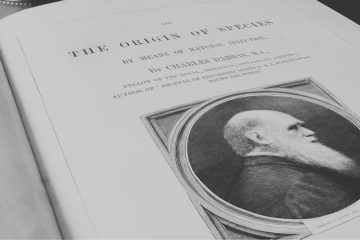What Happened On October 6th?
On October 6, 1995, Michel Mayor and Didier Queloz delivered a revelation that changed the astronomical community. Standing at the European Southern Observatory in Florence, Italy, they announced the discovery of 51 Pegasi b, the first exoplanet found orbiting a Sun-like star. This redefined humanity’s understanding of the cosmos and proved that planets existed beyond the solar system.
Months before this announcement, Mayor and Queloz painstakingly gathered data at the Haute-Provence Observatory in France. Their weapon of choice was the Élodie spectrograph, a tool capable of detecting subtle variations in a star’s velocity, which allowed them to observe minute “wobbles” in the star’s position. This wobble, caused by the gravitational pull of an unseen planet, confirmed that 51 Pegasi b—a gas giant roughly the size of Jupiter—was orbiting its parent star every four days. The discovery challenged conventional wisdom, which previously suggested that gas giants could only exist at great distances from their stars, where temperatures were lower.
The discovery left scientists astounded by the proximity of 51 Pegasi b to its star. This gas giant, heated to extreme temperatures, orbited 7 times closer to 51 Pegasi than Mercury does to the Sun. Such a rapid orbital period was unheard of for gas giants and sparked debates about planetary formation. Traditionally, researchers believed that gas giants could only form in the colder, outer regions of star systems. The existence of 51 Pegasi b forced them to reconsider their models, suggesting that giant planets might migrate inward after forming farther out—a concept that hadn’t been fully embraced before this discovery.
This discovery didn’t merely disrupt scientific theories; it opened the door to new methods of detecting planets. Astronomers, intrigued by Mayor and Queloz’s success with the radial velocity technique, began applying the method to other stars. This approach quickly yielded results, leading to the detection of many more exoplanets in short succession. These additional findings demonstrated that 51 Pegasi b wasn’t an isolated anomaly, but rather the beginning of a broader realization that planets around distant stars were more common than previously thought.
Verification of the findings came swiftly. Several observatories around the world confirmed the results, silencing any remaining skepticism. 51 Pegasi b became the first step in a long journey toward identifying thousands of exoplanets. The technology Mayor and Queloz had used—aided by rapid improvements in detection techniques—was soon adopted globally. The breakthrough not only expanded humanity’s understanding of the universe but also shifted the focus of astronomical research from star formation to planet hunting.
Mayor and Queloz’s decision to focus on 51 Pegasi, a stable and relatively bright star, was not random. They selected it carefully, knowing its stable light made it an ideal candidate for detecting slight movements caused by the gravitational influence of an orbiting planet. Their methodical approach to selecting their target ensured the highest likelihood of success, and this strategy became a blueprint for future planet-hunting missions.
What many did not anticipate was how quickly this discovery would spur new research. The revelation of 51 Pegasi b inspired astronomers across the world to reevaluate their previous observations, searching for overlooked signals in their data. As a result, numerous exoplanets were discovered within just a few years, some of them vastly different from 51 Pegasi b. Some were rocky, Earth-like planets orbiting in the habitable zones of their stars, while others resembled the scorching gas giant Mayor and Queloz had identified.
Not only did 51 Pegasi b challenge our understanding of where gas giants could form, but it also helped redefine the kinds of conditions under which planets could exist. Scientists were forced to grapple with the fact that planets like 51 Pegasi b could endure extreme heat and still maintain their gaseous compositions. The discovery led to a greater appreciation of planetary diversity and the realization that the characteristics of planets beyond our solar system might be far more varied than what we see in our own backyard.
The technological leap represented by the Élodie spectrograph cannot be understated. In the years leading up to this discovery, astronomers had lacked the precision tools necessary to detect planets as small as 51 Pegasi b’s influence on its star. The spectrograph provided the sensitivity needed to measure the tiny shifts in starlight caused by the planet’s gravitational pull—shifts so minute that previous instruments would have missed them entirely.
Following the discovery, the field of exoplanet research exploded. Researchers, inspired by Mayor and Queloz, began developing new techniques that could detect planets not only through radial velocity but through other methods such as transit photometry, which measures the dip in a star’s light when a planet passes in front of it. This complementary technique, combined with radial velocity, enabled astronomers to find smaller and more distant planets than ever before.
In the years that followed the discovery of 51 Pegasi b, the field of astronomy shifted dramatically. No longer focused exclusively on star formation or galactic structures, scientists began to search actively for planets around distant stars, changing the goals of space exploration entirely. The realization that planetary systems existed outside of our own solar system brought forth a sense of endless possibility, with scientists and the public alike contemplating the likelihood of life beyond Earth.





